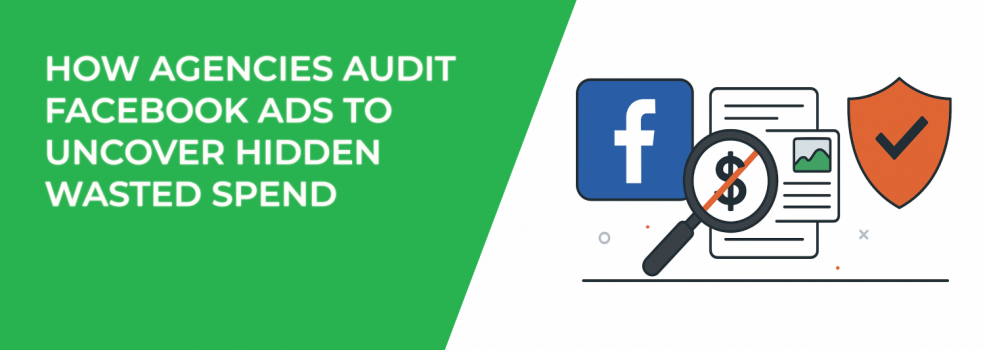Spending thousands on Facebook Ads doesn’t guarantee results. Behind the metrics, there’s often a different story: one where your budget quietly drains into campaigns that aren’t truly aligned with business objectives, audiences that no longer convert, or placements that inflate cost without delivering value. This is where agencies excel — through comprehensive audits that go far beyond surface metrics to uncover inefficiencies and reallocate spend where it counts.
Here’s a detailed look at how seasoned agencies audit Facebook Ads to identify hidden wasted spend and optimize performance.
1. They Begin with Strategic Alignment
Before diving into ad metrics, experienced agencies begin by asking: "What is this account supposed to achieve?"
Many accounts suffer from misalignment between business goals and campaign objectives. For example, a business seeking qualified leads may be optimizing for traffic, which often results in clicks but no conversions.
During the audit, agencies clarify:
-
Primary objectives (e.g., sales, leads, awareness) and whether the selected campaign objectives in Ads Manager reflect those goals.
-
Funnel stage targeting to ensure the account is addressing all stages — awareness, consideration, and conversion.
-
KPI accuracy, ensuring the account isn’t over-relying on vanity metrics such as impressions or engagement instead of cost per acquisition (CPA), return on ad spend (ROAS), or conversion rate.
A clear understanding of strategic intent sets the foundation for an effective audit.
2. They Analyze Account Structure and Budget Distribution
Account structure often reveals inefficiencies that lead to unnecessary spend. Agencies assess whether the campaign setup supports learning and optimization or hinders it.
Common structural issues include:
-
Budget fragmentation, where too many ad sets with low budgets prevent any of them from exiting the learning phase. Consolidating into fewer, better-funded ad sets improves performance stability.
-
Inconsistent naming conventions, which make it difficult to analyze historical performance or identify what’s being tested.
-
Campaigns with overlapping goals or audience targets, leading to internal competition and skewed data.
For a deeper breakdown of learning phase optimization, agencies often refer to structured approaches like how to finish the Facebook learning phase quickly.
3. They Audit Audience Targeting and Overlap
Targeting inefficiencies are a common source of wasted spend. Agencies examine how well the account segments its audiences, whether there’s duplication, and how effectively cold and warm traffic are being handled.
They typically uncover:
-
Audience overlap, where multiple ad sets target similar lookalike or interest-based audiences. This drives up competition and costs. A targeted exclusion strategy can reduce this issue. For guidance, see when to use exclude targeting on Facebook.
-
Non-performing segments, such as age groups or geographic locations that consume significant budget but fail to convert.
-
Overused lookalikes without regular refreshes or experimentation with custom audiences. For example, using the same 1% lookalike based on all website visitors for six months may underperform compared to a fresh list of high-value customers.
To determine which audience types work best for specific goals, see custom vs lookalike audiences.
Additionally, a common root issue is poorly defined personas. In these cases, agencies direct teams to revisit the basics. This step-by-step guide on how to define a target audience for marketing is often a crucial starting point.
4. They Identify and Remove Underperforming Creatives
Ad fatigue, irrelevance, or low creative quality can lead to rising CPMs and falling conversion rates. Agencies analyze creative performance across timeframes to identify which assets need to be paused, replaced, or tested further.
They evaluate:
-
Click-through rate (CTR) trends over 7-day and 30-day windows.
-
Frequency spikes that indicate oversaturation.
-
Negative feedback and quality ranking, which affect ad delivery and increase costs.
-
Cost per result by creative.
An audit might reveal that one video ad has a 2.3% CTR and $18 CPA, while a similar carousel ad has a 0.9% CTR and $44 CPA. The latter is paused immediately.
If CTR is dropping and CPM is holding steady or increasing, this could indicate fatigue. Learn more in how to spot and fix Facebook ad fatigue.
5. They Evaluate Placement and Device Performance
Not all placements deliver equally. Agencies break down results by placement and device to identify inefficiencies.
They investigate:
-
Underperforming placements, like Audience Network or Messenger, which may generate clicks but not conversions.
-
Device-level trends, particularly for mobile-heavy audiences. For instance, a site that isn't optimized for Android may explain lower conversion rates on that device.
-
Platform misalignment, where certain ad formats (e.g., vertical video) are mismatched to placements like the Facebook Feed.
By excluding high-cost, low-converting placements, clients can often reallocate 10–20% of their budget to more effective formats.
6. They Verify Attribution and Cross-Check Conversion Data
Agencies rarely take Facebook's reported conversions at face value. They verify conversion data against analytics platforms, CRM tools, and server-side tracking.
They examine:
-
Attribution windows, ensuring conversions aren’t being overcounted due to lenient settings.
-
Event firing accuracy, where mistakes like triggering "purchase" on the checkout page can distort ROAS.
-
Google Analytics behavior, such as bounce rate and time on page for Facebook-referred traffic.
-
CRM-to-ad-platform reconciliation, to verify whether leads or purchases attributed to Facebook are resulting in actual revenue.
Discrepancies between ad-reported results and sales performance are among the clearest indicators of wasted spend.
7. They Analyze Performance Trends and Scaling Risk
Beyond week-over-week results, agencies study performance trends to identify risks in scaling or stagnation.
Key insights include:
-
CPA trends over time, which may rise as audience quality decreases or competition increases.
-
Scaling thresholds, where increasing budget begins to erode ROAS.
-
Spend pacing, ensuring the budget is distributed efficiently by day and hour.
For brands considering scale, it’s worth reviewing how to scale Facebook ads without killing performance.
8. They Audit the Funnel Beyond the Click
The journey doesn’t end with the ad. Agencies assess whether the landing page, form, or checkout flow is effectively converting traffic.
They review:
-
Page load speed, especially on mobile.
-
Conversion friction, including excessive form fields or unclear CTAs.
-
Visual and messaging consistency between ad and landing page.
-
Pixel and event tracking setup, to ensure post-click behavior is captured accurately.
One common example: an agency discovers that mobile traffic sees a lead form with five required fields, but only 2% completion rate. By reducing to three fields, completion jumps to 9%, cutting CPL by over 60%.
9. They Deliver a Prioritized Action Plan
Once the audit is complete, agencies provide a clear, tiered roadmap:
-
Immediate fixes: Pause underperforming creatives, correct tracking errors, eliminate wasteful placements.
-
Mid-term actions: Adjust campaign structures, refresh audiences, align objectives.
-
Strategic projects: Implement funnel testing, advanced creative testing, new audience personas.
They also recommend audit frequency. Typically, a comprehensive audit is conducted quarterly, with lighter checks monthly.
Final Thoughts
A Facebook ad audit is not a quick scan — it’s a detailed diagnostic. It requires a strategic lens, data cross-validation, and a willingness to challenge assumptions. Most accounts have hidden inefficiencies that only show up when someone with the right experience goes looking.
If your costs are rising, performance is plateauing, or you're scaling without clarity, a professional audit can often reclaim 20–40% of wasted ad spend.

